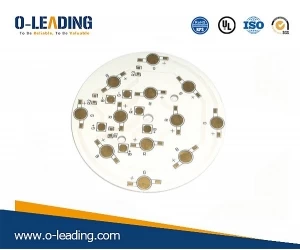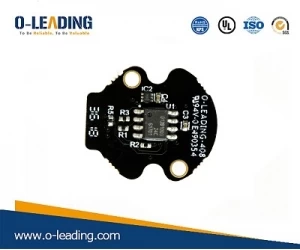Analysis of the advantages and disadvantages of PCB copper design

Ceramic Printed circuit board supplier
Copper-clad is to use the unused space on the PCB as the reference surface, and then fill it with solid copper, which is also called copper filling.
The significance of copper clad is to reduce the ground line impedance, improve the anti-interference ability; reduce the voltage drop, improve the power supply efficiency; connect with the ground wire, and also reduce the loop area. Also for the purpose of making the PCB soldered as much as possible, most PCB manufacturers will also require the PCB designer to fill the copper or grid-like ground wire in the open area of the PCB. If the copper is not handled properly, it will If you don’t appreciate it, is it that “benefits outweigh the disadvantages” or “does more harm than good”?
Everyone knows that at high frequencies, the distributed capacitance of the wiring on the printed circuit board will work. When the length is greater than 1/20 of the corresponding wavelength of the noise frequency, an antenna effect will occur and the noise will be emitted through the wiring. If there is a poorly grounded copper in the PCB, copper is a tool for propagating noise. Therefore, in high-frequency circuits, don't think that somewhere on the ground is grounded. This is the ground. "Line" must be made with a hole on the wiring at a pitch less than λ/20, and "good grounding" with the ground plane of the multilayer board. If the copper coating is properly treated, the copper cladding not only has an increased current, but also plays a dual role of shielding interference.

China copper base PCB manufacturers
There are two basic ways to cover copper. It is a large area of copper and grid copper. It is often asked whether a large area of copper is good or a grid of copper. It is not easy to generalize. Why? Large-area copper-clad, with the dual function of increasing current and shielding, but a large area of copper, if the wave soldering, the board may be upturned, and even foaming. Therefore, large area copper is covered, and generally several slots are opened to alleviate the blistering of the copper foil. The simple grid copper is mainly shielded, and the effect of increasing the current is reduced. From the perspective of heat dissipation, the grid is beneficial. (It reduces the heating surface of copper) and plays a role in electromagnetic shielding.
However, it should be pointed out that the grid is composed of traces in the staggered direction. We know that for the circuit, the width of the trace has its corresponding "electrical length" for the operating frequency of the board (actual size) Divided by the digital frequency corresponding to the working frequency, specifically related books), when the working frequency is not very high, perhaps the role of the grid line is not very obvious, once the electrical length and the working frequency match, it is very bad, You will find that the circuit is not working at all, and signals that interfere with the operation of the system are being transmitted everywhere.(High Quality Aluminum PCB manufacturer)
Therefore, for colleagues who use the grid, my suggestion is to choose according to the design of the board work, do not hold a thing. Therefore, the high-frequency circuit is resistant to the multi-purpose grid with high interference requirements, and the low-frequency circuit has a large current circuit and the like is generally used for copper plating.
































